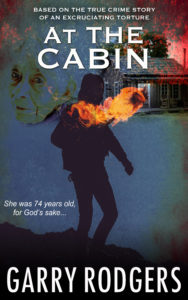 Crime pays. That’s what I’ve learned as I publish Book 8 in my based-on-true-crime series — At The Cabin. This follows In The Attic (which was #1 on Amazon’s Crime Thriller Bestselling list), Under The Ground, From The Shadows, Beside The Road, On The Floor, Between The Bikers, and Beyond The Limits. 4 more are planned in this series, but they’ve suddenly braked while I explore an intriguing opportunity with the film industry — a net-streaming project titled City Of Danger. In the mean time, here’s the product description / blurb / jacket copy for At The Cabin.
Crime pays. That’s what I’ve learned as I publish Book 8 in my based-on-true-crime series — At The Cabin. This follows In The Attic (which was #1 on Amazon’s Crime Thriller Bestselling list), Under The Ground, From The Shadows, Beside The Road, On The Floor, Between The Bikers, and Beyond The Limits. 4 more are planned in this series, but they’ve suddenly braked while I explore an intriguing opportunity with the film industry — a net-streaming project titled City Of Danger. In the mean time, here’s the product description / blurb / jacket copy for At The Cabin.
——
What monstrous savage viciously attacked Bea Bonnell—inflicting fractures, burns, and excruciating torture on her? And why did he do it? Bea was seventy-four years old, for God’s sake, when this true crime story occurred.
Beatrice Bonnell and her husband, Stan Bonnell, spend their winters at the cabin they own on De Courcy Island in the mild southwest coast of British Columbia. Their De Courcy cabin is far south of their second home near Atlin, an equally small place in the cold goldfields of northern Canada’s Yukon Territory. And it’s always safe and secure at the De Courcy cabin—until a masked and armed stranger arrives with a depraved demand and the brutal intent of getting back something extremely valuable. Bea resists, and the barbaric beast works Bea over—breaking her fingers and ribs, repeatedly singeing her side with a red-hot knife, then setting the cabin on fire with Bea blindfolded and hogtied inside.
Is there a link between the two cabins—Atlin and De Courcy—bringing on this atrocious assault and putting Bea Bonnell into a life-threatening state where she’ll succumb to horrific wounds? That’s the complex case facing the Serious Crimes Section. Their intricate investigation takes detectives from the wintery waters of the Pacific Northwest to the snow-packed roads of the Klondike where they prove two fundamentals found in solving all crimes. One: Occam’s razor—when faced with two hypotheses, the simpler one is always correct. Two: The stranger the circumstances, the closer the answer is to home.
At The Cabin is Book 8 in the Based-On-True-Crime Series by Garry Rodgers, a retired homicide detective with a second career as a coroner—now reincarnated into an international bestselling crime writer. Get At The Cabin in eBook format at Amazon, Kobo, and Nook.
Here are the First Two Chapters of At The Cabin
WARNING!
At The Cabin is based on a true crime story. Explicit descriptions of the crime scenes, factual dialogue, real forensic procedures, and actual police investigation, interview and interrogation techniques are portrayed. Some names, times, and locations have been changed for privacy concerns and commercial purposes.
Chapter One — Thursday, March 11th – 8:35 a.m.
“She’s lucky she’s still alive.” The detective from our Green Timbers Serious Crimes Section stopped. She swallowed. She was on the other end of my phone, calling from the Burn Unit at Vancouver General Hospital. “I’ve never seen such injuries… deliberate injuries. The viciousness of this attack is fu… appalling! Sheer cruelty and excruciating torture.”
“What’s the lady’s name again?” I had my notebook open, pen in hand, and a dark roast on my workstation desk.
“Beatrice Bonnell. She goes by Bea.” The Vancouver detective paused. She swallowed again. “Bea’s seventy-four years old, for God’s sake. This assault is just… excuse the language… fucking abhorrent!”
“Where did you say this happened?” I heard her say the place when she called to report one of the most despicable and savage offenses I’d ever investigate.
“At the cabin they own. It’s on De Courcy Island. Our map indicates it’s in your territory. Nanaimo Regional District.”
——
De Courcy Island was in my policing area. De Courcy was one of many chunks of rocky land jutting from the Pacific Ocean off the southeast side of Vancouver Island in British Columbia at Canada’s west coast. Officially, this water-bound and tree-filled region was known as the Southern Gulf Islands in the Salish Sea. Unofficially, the area was the “Big Island” and a bunch of little ones—over a hundred of them, depending on how you classified islands.
I was at my desk at the Nanaimo Serious Crimes Section when my colleague from Vancouver phoned. She’d been notified by hospital authorities when Bea Bonnell arrived by Helijet ambulance the previous evening. Because Bea’s attacked occurred outside the City of Vancouver, investigation responsibility fell to the local area holding jurisdiction for the spot.
That spot, on De Courcy, was just south of Nanaimo, which is a small city of 100,000 on the Big Island. Nanaimo was a hub of activity being straight across from Vancouver proper which was one of the most exotic, erotic, and expensive paces on the planet. Nanaimo also had an active crime rate exceeding Vancouver’s when measured on a per capita base. And the crime against Bea Bonnell rated at the top of atrocities one human being can inflict upon another.
——
“Give me what you got so far.” I was ready to write more besides Bea Bonnell and At The Cabin.
“I don’t know much, to be honest.” The detective’s voice was overtight, like a wound watch spring read to snap. “She was admitted here at eight-forty p.m. last night. Airlifted from Nanaimo to VGH, and they put her directly in the burn unit. It’s questionable if she’ll make it. She’s in critical condition suffering not only from multiple third-degree burns but also from fractured ribs and broken fingers. Whoever did this really worked her over.”
“Any suspects or motive?”
“No suspects by name. Just a lone male. Unknown male. Masked male armed with a handgun. Robbery on the surface, but I think there’s more going on here that’s not being told.”
“Like what?”
“It’s just the vibe I’m getting. What I’m told, and this is third-hand, is that the victim was alone at the cabin she and her husband Stanley Bonnell have on De Courcy Island. He goes by Stan. Stan Bonnell. Little older than her. Seventy-six.”
“Stan and Bea Bonnell? Seventy-four and seventy-six? When did the attack happen?”
“Yesterday afternoon. The best I can get is that it was after one p.m. when Stan left Bea alone at the cabin while he went to town. Nanaimo. They live at an isolated spot on De Courcy and have to take a boat off and on. Do you know the place? De Courcy, I mean. Not necessarily the cabin itself.”
“Yup. I’ve been in Nanaimo over thirty years, and I’m a boater. I’m familiar with De Courcy’s location and coastline but not the island by land. It’s like a lot of these small Gulf Islands. Sparsely populated and private.”
“Right. I Googled it. I also have GPS coordinates for the cabin location.”
“What else do you have?” I asked this as I wrote the GPS numbers in my book. “What was this guy after?”
“Well, this is where I’m having trouble. Bea is sedated so she can’t talk. The only one she’s told is Stan and he’s… I don’t know how to put it… vague. Not… I can’t say evasive. Maybe a touch of dementia, or maybe just the stress of this whole thing.”
“I can understand the stress. What’s the extent of Bea’s injuries?”
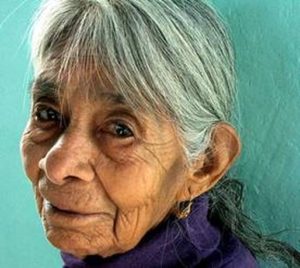 “Most of her fingers and some of her ribs are broken. Then she has a series of thirteen individual burns along her left side. Directly on her skin from her hip up to her mid-chest area. They look like what she says happened. First, he tied her hands behind her back. Then he broke or dislocated her thumbs and fingers and he threw her on the floor and began kicking her in the ribs. Then it got worse. He heated up a knife on the stove and began burning her again and again along the side until he got frustrated and left but not before setting the cabin on fire with her hog-tied with a pillowcase over her head.”
“Most of her fingers and some of her ribs are broken. Then she has a series of thirteen individual burns along her left side. Directly on her skin from her hip up to her mid-chest area. They look like what she says happened. First, he tied her hands behind her back. Then he broke or dislocated her thumbs and fingers and he threw her on the floor and began kicking her in the ribs. Then it got worse. He heated up a knife on the stove and began burning her again and again along the side until he got frustrated and left but not before setting the cabin on fire with her hog-tied with a pillowcase over her head.”
“Hog-tied? Pillowcase? Set the cabin on fire with her in it?” I’d never heard anything like it. “How the fuck did she survive?”
“She must be one tough old bird.” The detective was tenser now than when she’d started talking. “This is what I got from Stan and the medical staff he talked to. Stan left Bea alone at the cabin while he took his boat and left De Courcy to get something. He was gone four hours and got back just before dark. He found Bea lying on the ground outside the cabin door. She was still bound and hooded. She was in terrible pain and nearly delirious as well as hypothermic.
“I can’t imagine. It was so cold and wet here yesterday.”
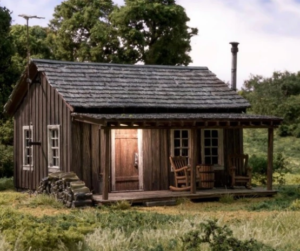 “The best I know of what Bea told Stan, and this is hearsay, is that after Stan left, this masked man showed up at the cabin holding a handgun and threatened to kill her, Bea, if she didn’t give him what he wanted. Bea refused, so the guy wrapped her hands behind her back and took a pillowcase, I don’t know, from the bed maybe, and pulled it over her head. He told her he was going to work her over till she gave in. She told him she didn’t have anything to give him. Then he started bending and snapping her fingers, put the boots to her ribs, and then went into the burning.”
“The best I know of what Bea told Stan, and this is hearsay, is that after Stan left, this masked man showed up at the cabin holding a handgun and threatened to kill her, Bea, if she didn’t give him what he wanted. Bea refused, so the guy wrapped her hands behind her back and took a pillowcase, I don’t know, from the bed maybe, and pulled it over her head. He told her he was going to work her over till she gave in. She told him she didn’t have anything to give him. Then he started bending and snapping her fingers, put the boots to her ribs, and then went into the burning.”
“This is just fuckin’ sick.”
“No better word to describe it.” The detective’s voice was like someone had turned her volume down.
“Then he set the cabin on fire? How’d she get out of being hooded and hog-tied?”
“I’m not that clear about this. The cabin didn’t burn down. He, the bad guy, told her since she didn’t give up what he wanted, she could die in there. So he took a bunch of papers and placed them around the stove. They caught fire and he left, closing the door behind him. Bea could see flames through the pillowcase, so she wiggled her way to the stove and managed to knock a pot of water off the top and that drenched the papers.”
“Wow!”
“Then she wormed her way to the door, forced it open, and rolled outside. Bea lay there on the wet and cold ground until Stan got back. Oh! And her feet, ankles, were tied too.”
“Just wow!”
“Like I first said, she’s fucking lucky to still be alive.”
“What’s her medical prognosis?”
“Not good. She’s in critical condition. They’re afraid she’s going to develop complications and pass away. The severity of her injuries and her age are so stacked against her.”
“What was this guy after? Like, to go to this extent, there must be something extremely valuable he wanted.”
“This is where I’m having a hard time.” The detective took a long pause. She quietly said, “I don’t think Stan is being truthful with me.”
Chapter Two — Thursday, March 11th – 9:40 a.m.
I sat in Leaky Lewis’s office. Harry was with me. We talked about the report I’d received on Bea and Stan Bonnell from the Green Timbers detective.
Leaky was in charge of support services in our police department. His real name was Jim Lewis, and he got the nickname because of a chronic condition. Leaky suffered from urinary incontinence which made him well suited to occupy the corner office equipped with a private washroom.
Our Nanaimo force had a complement of around 140 regular police officers with an additional sixty civilians working in various roles. The backbone of any police force is the uniform or patrol officers who handle front-line complaints and emergencies. I spent very little time in uniform as I quickly realized where the backbone ends up so I made a play for criminal investigations. Now, I had well over thirty years of detective experience and was a leading candidate to be put out to pasture—cop-speak for retirement.
The support services Leaky commanded included our Serious Crimes Section. We had three teams of two detectives, each of whom were mandated to solve violent offenses against people. Mostly, we did murder cases but serious assaults like the one on Bea Bonnell fell into our hands, especially since Bea’s prognosis wasn’t good. This had every shadow of a murder file developing as the time passed and clues came to light.
Besides our overworked Serious Crime Section, Leaky looked after our Forensic Identification Section, which was the CSI department, Drug Squad, Criminal Intelligence, Commercial Crime, Street Crew, Property Crimes, and one poor prick plagued with frauds and bad plastic.
Harry was my detective partner. Her real name was Sheryl Henderson. Sheryl was a large lady with large hair and an even larger personality. She got the name Harry after the Bigfoot or Sasquatch in the movie Harry and the Hendersons.
——
“I think Stan’s hiding something.” Harry was the first to speak. She’d listened in to the phone call with the Vancouver detective. “I don’t buy Stan’s statement. Like, some armed and masked stranger shows up while he’s away and does this to his wife and Stan doesn’t know what the guy was after? Give me a fucking break.”
Harry was never one to suppress her opinion. She was usually right, but tact and diplomacy weren’t strong character traits with Harry. Still, I loved her as my partner of three years, and I knew the number one strength holding Harry together—her loyalty.
We played the audio-recorded statement the detective took from Stan Bonnell and shipped to us as an email attachment.
——
“Please state your full name and address, Mister Bonnell.”
“Right. I’m Stanley Edgar Bonnell. That’s Bonnell with two n’s and two l’s. I go by Stan. Stan Bonnell. We have two places. That’s me ’n Bea, my wife. Beatrice June Bonnell. The winter we spend down at the cabin on De Courcy Island. Summers, me ’n Bea are up at the cabin at Surprise Lake ’bout twenty miles due east of Atlin. Atlin, if you know where it is, is in the northwest corner of British Columbia. Closest big town or trading center up there is Whitehorse in the Yukon Territory. We come down to De Courcy in November when things start to freeze up in the north, and we head back up in late April when things start to thaw out again and the frost is gone enough so we can work the ground.”
“Very well. Please tell me what happened at the cabin on De Courcy Island that led to you and your wife Bea to be here at Vancouver General Hospital where we’re recording your statement today.”
“Right. So I don’t know exactly what happened at the cabin ’cause I wasn’t there when it happened. I can only go by what Bea managed to tell me, and what I saw musta gone on. I was away in town. At Nanaimo. I left just after noon to conduct business and get supplies and I took the boat we moor at De Courcy at Gunderson’s dock. Bea was fine and everything was good when I left. However, when I come back approaching dark, I arrived to find a hell of a mess. Here was poor Bea all wrapped up on the ground outside the door and she was terrified and in terrible pain from her injuries. I pulls up in the truck. We got an old truck we use to get around on the island as the cabin is not down by the dock. It’s a bit inland. Anyway, I sees Bea on the ground with her hands tied behind her and her feet cinched at the ankles and this soaking wet cloth hood over her head and I says, ‘Land’s sakes woman. What have you gone and done to yourself?’ And she says the best she can ’cause she’s now terribly cold and shaking and really in pain, ‘He tried to rob me and he smashed-up my hands and my ribs and burnt me all over with a hot knife.’ And I says, ‘Who? Who done this?’ I untied her. Actually, I cut the rope off her hands and feet, ankles, and I yanked the hood off and I got her up and into the truck where what we got left of a heater was on. Bea says, ‘I don’t know who done this. I got no idea at all. You got to get me to the hospital.’ She was in bad shape. Real bad shape and the medical folks here don’t know if she’s gonna make it. Gonna pull through.”
“Did she describe her attacker?”
“Masked man with a gun. Handgun. That’s all she said. She got no idea who done this.”
“Did your wife say what he wanted? What he was after that made him do this?”
“She didn’t get into that much detail. She also told me he tried to set fire to the cabin with her in there. I looked and I saw where the papers on the floor were burnt and where she kicked the hot water pot over to douse them out.”
‘She was able to give you this detail, but not the reason the masked man with the gun came to your cabin and did these horrific acts to her?”
 “Nope. I mean yes. Yes, Bea said what happened. As in who it was and what he did to her. She didn’t exactly go into all what was said. Like I said, Bea was in awful pain and terribly cold. All she wanted, and all I could think of, was getting her warmed up and to a place where her injuries could be treated. I took her by boat to Nanaimo where an ambulance met us at the dock. Seeing how bad she was, they flew her straight over here to the burn ward.”
“Nope. I mean yes. Yes, Bea said what happened. As in who it was and what he did to her. She didn’t exactly go into all what was said. Like I said, Bea was in awful pain and terribly cold. All she wanted, and all I could think of, was getting her warmed up and to a place where her injuries could be treated. I took her by boat to Nanaimo where an ambulance met us at the dock. Seeing how bad she was, they flew her straight over here to the burn ward.”
“Excuse me for a sec. You said Bea knew who it was. She knew who it was that attacked her?”
“No. No. She knew it was a masked man with a gun who done this. A loner. She didn’t know who the guy was as in his identity. I got no clue who done this.”
“Do you know why he attacked Bea? What exactly he was after?”
“He might have been after something. Something real valuable enough to go to this stretch.”
“Stan, this is an extremely vicious attack. Whoever is behind this must have been desperate for something. What’s your suspicion?”
“I can’t really say.”
Chapter Three — Thursday, March 11th – 9:55 a.m.
“He can’t really say.” Harry scoffed. She clicked her pen. “Bullshit.”

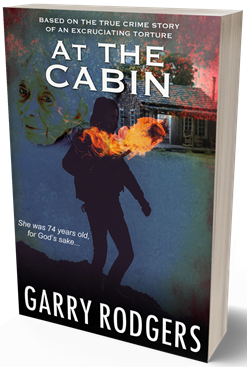
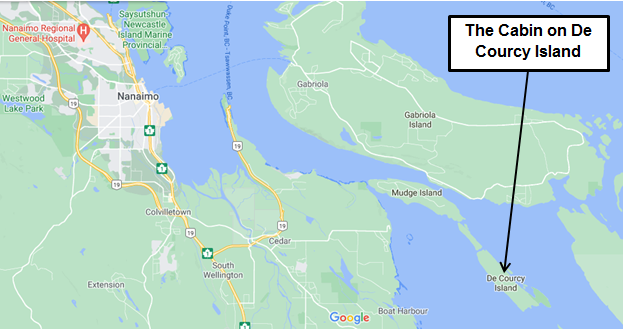


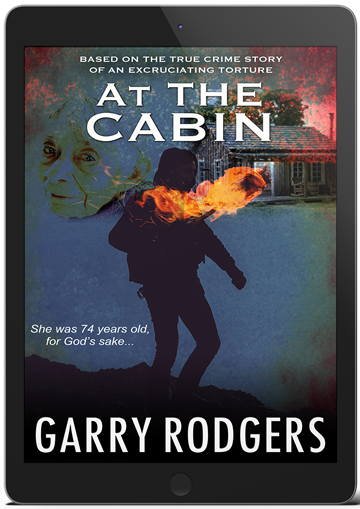
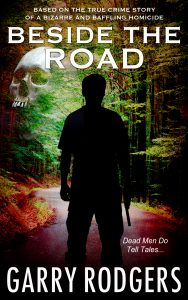
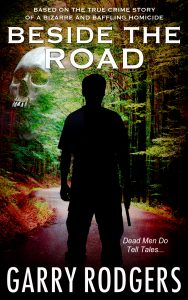




![grodgers-write-deadly-fiction-cover-online-use-3debook-sml[1]](http://dyingwords.net/wp-content/uploads/2015/09/grodgers-write-deadly-fiction-cover-online-use-3debook-sml1-225x300.png)

![grodgers-write-deadly-cover-online-use-3dbook-sml[1]](http://dyingwords.net/wp-content/uploads/2015/09/grodgers-write-deadly-cover-online-use-3dbook-sml1-235x300.png)
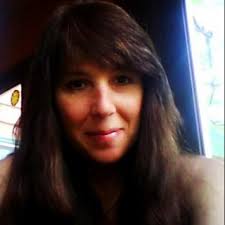
![grodgers-deadly-selfedit-cover-online-use-sml[1]](http://dyingwords.net/wp-content/uploads/2015/09/grodgers-deadly-selfedit-cover-online-use-sml1.jpg)
![grodgers-write-deadly-dialogue-cover-online-use-3debook-sml[1]](http://dyingwords.net/wp-content/uploads/2015/09/grodgers-write-deadly-dialogue-cover-online-use-3debook-sml1-225x300.png)
![grodgers-write-deadly-forensics-cover-online-use-3dbook-sml[1]](http://dyingwords.net/wp-content/uploads/2015/09/grodgers-write-deadly-forensics-cover-online-use-3dbook-sml1-235x300.png)
![grodgers-write-deadly-autopsies-cover-ebook-interior-1024px[1]](http://dyingwords.net/wp-content/uploads/2015/09/grodgers-write-deadly-autopsies-cover-ebook-interior-1024px1-199x300.jpg)